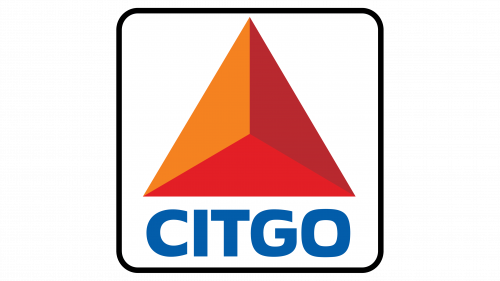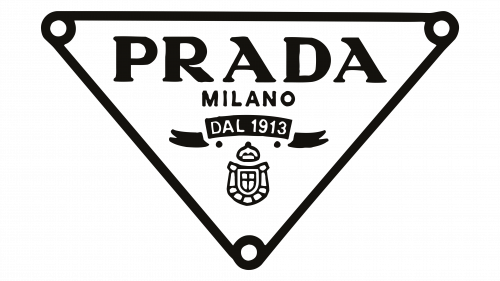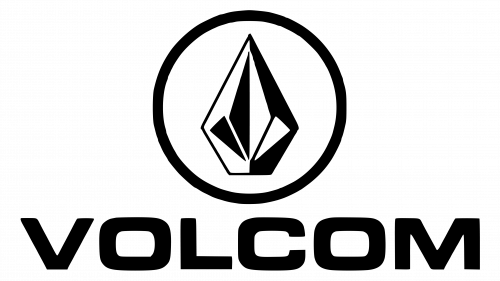The design world has witnessed a proliferation of logos that utilize the powerful image of a triangle. For example, Google’s symbolic “Play” sign or Fila’s striking word mark have all used this geometric shape to leave an indelible mark on the minds of their audiences.
Like colors and fonts, shapes play a key role in branding, carrying a specific connotation that can influence perception. It is a complex dance of visual elements deliberately chosen to convey a desired message about a brand or organization.
The square, with its balanced sides and equal angles, evokes a sense of reliability, groundedness, and solid foundation. It is often associated with brands that strive to create an image of reliability and consistency. On the other hand, the circle represents inclusiveness, wholeness, and unity. The continuous outline of the circle symbolizes communities and connections, making it a favorite for brands looking to build a sense of belonging.
Triangles, however, bring their own unique twist. They are dynamic, evoking notions of cuteness, progress, and direction. Depending on their orientation, triangles can indicate upward movement, signifying growth and aspiration, or stability when placed on a flat base. Their boldness is often associated with brands that want to stand out, make a statement, or direct attention.
The field of logos dominated by triangles provides insight into how brands utilize the inherent qualities of this shape. Whether it’s a symbol of innovation, forward motion, or a disruptive stance, the triangle has proven its versatility in the hands of designers.
What do triangle logos mean? An introduction
Triangular design in logos has a rich history and many interpretations. In Druidic and Masonic circles, the triangle was considered a symbol of power, charisma, and masculinity. In pagan traditions, it often personified the feminine.
Like other geometric figures, triangles can carry different meanings. While squares mostly signify stability, triangles often carry a dynamic aura that suggests innovation and action. Their internal structure directs the viewer’s gaze, giving designers the ability to control perception. The Guess logo draws the eye with its downward-pointing triangle, creating a reflective stance. The rightward pointing triangle of Google’s “Play” emblem indicates progress and forward movement.
The adaptability of the triangle in the design is worth noting. When multiple triangles are combined, they can form intriguing patterns, each adding depth to the logo. A freestanding triangle, based on its orientation, can act as a focal point, directing the viewer’s attention.
The association of this geometric figure with research, progress, and evolution makes it a preferred choice in certain industries. Not surprisingly, triangular motifs often adorn logos in the technology sector, symbolizing cutting-edge innovation. Similarly, triangles, with their strength and forward-looking nature, resonate in industries such as construction and finance, projecting growth and stability. In the legal sector, where precision and clarity are paramount, the sharp edges of the triangle are also reflected. The fashion world is no stranger to bold statements and avant-garde design, where triangular patterns often serve as a symbol of modernity and trend.
With their versatile interpretation and dynamic geometry, triangles remain a favorite in logo design, resonating across industries and audiences.
Adidas
The globally recognized Adidas emblem makes original use of consecutive stripes that converge in the likeness of a triangle. This symbolic pattern eventually took its place as one of the main symbols in the world of sportswear. This iconic image adorns the brand’s footwear, making it instantly recognizable to enthusiasts and casual observers alike.
The triangular configuration of the Adidas mark brings to mind parallels with mountain peaks. This visual metaphor subtly captures the essence of challenges, aspirations, and man’s relentless drive to overcome obstacles.
Adobe
Adobe, a company synonymous with cutting-edge design software, enjoys a well-deserved reputation around the world. With a set of products that are often cited as industry benchmarks, it’s no wonder the company is highly respected by professionals and enthusiasts alike.
At the heart of the company’s visual identity is the emblem, complete with triangular elements. These geometric shapes resemble the letter “A,” which anchors the brand’s uniqueness. But it’s not just an alphabetical representation. The upward-pointing triangles bring to mind thoughts of ascension and advancement.
Airbnb
With its iconic logo, Airbnb reimagined the use of triangular motifs in branding. Instead of a rigid triangle, their symbol is shaped like an inverted heart, with the edges curving gently, evoking a sense of warmth and accessibility.
This uniquely shaped triangle serves a dual purpose: it captures the essence of hospitality and embodies the brand’s ethos of creating a sense of belonging for its users. Inside the emblem is a design that resembles a pin on a map, subtly hinting at destinations and the idea of finding the perfect place to stay. Additionally, this silhouette resembles the letter “A,” inadvertently hinting at the brand’s name.
The inclusion of these elements in the Airbnb logo reflects the company’s commitment to connecting and enabling travelers to find the perfect home away from home.
Alcatel
Alcatel’s emblem demonstrates a keen sense of geometric design and includes two triangles. One of the triangles, rendered in yellow-orange colors, points downward, drawing the eye toward the brand’s name. The letter “A” in the wordmark is not a typical letter design. It is represented by a pure white triangle, harmoniously mirroring its colored counterpart.
This symmetrical arrangement creates an aura of balance and harmony, which is very important for a brand based on seamless interaction. The repeating triangular motifs subtly emphasize the essence of interconnectivity. For a company in the communication apparatus industry, this design fits the brand’s mission of facilitating easy communication across multiple platforms and channels.
Bass
The bright scarlet triangle synonymous with the Bass brand certainly stands out in the complex realm of beer emblems. With roots dating back to 1777, the Bass brand has carried its history through the tapestry of time, and its enduring position in today’s marketplace is due in large part to its compelling graphic representation.
In 1876, it was this emblem that carved its niche in the annals of branding. It was in that year that it became the first trademark to be officially recognized by the British regulatory authorities. The triangular design, colored a rich scarlet and pointing skyward, often symbolizes foresight and the relentless pursuit of development.
Borgward
Borgward Manufacturing Company, in its heyday, displayed an emblem in which several triangles were skillfully joined to form a distinct diamond pattern. This emblem, rendered in red and white colors, was not just a design but an embodiment of values. While Borgward may no longer dominate the market as it once did, its carefully crafted logo is a testament to the impact triangular motifs can have on branding without losing their relevance.
CAT
The emblem of CAT, a leading construction company, is a bright yellow triangle superimposed on the brand name. The bright hue of this triangle attracts attention and generates interest.
The choice of yellow color is not only for aesthetic reasons; it conveys emotion. This shade is often associated with optimism, vitality, and enlightenment.
Triangles, being elementary geometric figures, radiate balance and solidity. When a construction equipment company uses this figure in its logo, it carries a certain meaning. It subtly hints at the strength and reliability of their products.
Citgo
Citgo takes its rightful place among the prominent companies in the oil and gas sector. This privately held company, known for its achievements in the refining, transportation, and commercialization of transportation fuels, petrochemicals, and lubricants, has a wide presence, especially in the United States.
The Citgo emblem is not a simplistic triangular shape but a fusion of three triangles, each with a different hue. The design emphasizes the diversity of the company’s capabilities and the wide range of products offered.
Delta Airlines
Delta, a well-known airline company, has a logo that is prominent in the airline industry. Although the logo has undergone several changes, the triangular motif remains a constant element.
This symbolic shape corresponds to the company’s name, formed from the Greek letter “Delta,” which is triangular in shape and serves a dual function. The arrow pointing skyward subtly emphasizes the company’s core mission: to promote flight and connect the world to the sky. The triangle, conveying stability and upward momentum, reflects the desire for progress in aviation.
DS Automobiles
DS Automobiles, a well-known automobile manufacturer, boasts an emblem that, at first glance, may appear to be a simple amalgamation of the letters “D” and “S” representing the brand name. A deeper look reveals intricate triangular formations within these letters.
The inclusion of such geometric shapes serves a dual purpose. The triangles subtly hint at the perspective and innovation of the brand. Such details are not just a design choice but a conscious statement of the brand’s identity and vision.
Fila
The famous Italian clothing brand Fila exemplifies the ingenuity of intertwining geometric shapes in typographic design. The characteristic design of the final “A” in their brand mark strikingly resembles a triangular shape rather than a traditional letter.
If one delves into the history of the brand, one can understand the purpose behind this design. Many people perceive it simply as a stylized letter, but there is actually more to it than meets the eye. It is a reference to the brand’s origins when it created clothes for people living near these majestic mountains. By incorporating this subtle element into its logo, Fila stands out and pays homage to its roots, giving the brand a unique identity.
Google Drive
The Google Drive emblem, at a cursory glance, appears to be a triangle with softened edges. A closer look reveals a multi-faceted design. Inside the central part is another triangle, and at the intersection of clear color lines are three smaller triangles.
These varied colors and geometric shapes have deep significance. They symbolize the various tools and applications that are an integral part of the Google ecosystem. Each hue corresponds to a specific tool, such as Google Docs, Sheets, and Slides. In this logo, Google captures the essence of its platform – a single space for various functions.
Google Play
Google often uses triangles in its design. In addition to the Drive logo, the Google Play emblem also has this shape. This emblem resembles the universal “play” icon found on various devices such as media players, TV remotes, and other digital platforms, similar to the YouTube sign.
The rectangular triangle is globally associated with notions of progression, forward movement, and dynamism. In many cultures and contexts, it symbolizes pushing boundaries, moving forward, and initiating action.
Guess
The recognizable and eye-catching Guess emblem is a testament to the power of innovative fashion branding. Although the triangle is not present on all products, its presence is undeniable in many of the company’s clothing collections and promotions.
The bright hue and distinct shape of this logo evoke feelings of liveliness and enthusiasm. The triangular motif, intriguingly pointing downwards, departs from the traditional upward design and signifies a unique combination of ingenuity and originality.
The triangular-shaped question mark further emphasizes the brand’s desire to combine curiosity with style in high fashion.
HGTV
HGTV is a well-known television network with the acronym Home & Garden Television, owned by Warner Company and Discovery. Targeting an audience that enjoys home improvement and real estate, the channel offers a wealth of content on these topics.
In HGTV’s visual presentation, the triangular motif is not just a random geometric inclusion. This shape above the brand’s lettering echoes the silhouette of a home’s roof. It subtly conveys the concepts of progress, evolution, and limitless horizons of possibilities in home and garden improvement.
HSBC
The HSBC logo, with its geometric appeal, at first appears to be just an abstract design. A closer look reveals that it is an elaborate composition of six triangles. This intricate arrangement creates the illusion of a container revealing its contents.
The palette, dominated by the red and white hues in the triangles, carries more than just aesthetic appeal. Red traditionally denotes energy, vigor, and determination, while white denotes purity, clarity, and precision.
Beyond colors, the combination of triangles in a quasi-square design is not just a random artistic choice. It subtly conveys the underlying solidity, steadfastness, and unwavering loyalty of the bank to its customers around the world.
Infiniti
The triangle has always stood out in the images of automobile brands as a preferred geometric figure. As an example, we can take the emblem of the famous Japanese automobile brand Infiniti. This emblem, made in the style of “master class,” is a triangle with negative space enclosed in an oval.
The triangular shape conjures up the image of a road, smoothly merging with the distant horizon. Such an image symbolizes Infiniti’s unwavering commitment to the development of its lineup, especially emphasizing its ambitions for electric and hybrid vehicles.
Kenwood
With understated elegance, the Kenwood emblem combines a simple sans-serif font with a bright red triangle, making it an eye-catching centerpiece. This design choice sets the brand apart in a competitive market and carries significant symbolic value.
The triangle, which stands out in its orientation, symbolizes concepts such as innovation, peak performance, and a solid foundation. Gracefully placed at its apex, the triangle conveys a sense of balance and precision. Such design elements emphasize Kenwood’s desire for excellence and breakthroughs in the industry. The choice of red for the triangle further emphasizes its significance by highlighting passion, energy, and determination.
Metallica
Metallica, a name with deep resonance in the music industry, uniquely, albeit in a different way, captures the essence of triangles in its branding. Known for their sharp angles, triangular shapes naturally convey notions of edginess, aggression, and departure from the norm.
In Metallica’s symbolic representation, the sharp nature of the letter “A” at the center of its name is prominently emphasized. In addition, the first and last characters of the name have a pronounced angularity. Metallica’s emblem clearly reflects the band’s aggressive, innovative spirit and is a testament to its legendary status in rock music.
Mitsubishi
The Mitsubishi emblem contains complex design elements that can not be noticed immediately. The three diamonds are the first to catch the eye, but of equal importance is the negative space formed between them.
These individual triangular spaces converging in the center convey a theme of fusion and cohesion. The design suggests a gathering point or node, subtly hinting at unity and collaboration.
When viewed holistically, the trio of diamonds generally echoes the triangle theme. The apex of this large triangle points skyward, indicating an upward trajectory. Through the Mitsubishi emblem, the uniqueness of the brand based on progress, research, and relentless forward movement is conveyed.
Motorola
Motorola logo, depicting a stylized letter “M,” carries a deep symbolic meaning. The two pronounced peaks of the letter “M” evoke images of towering mountain ranges. In the negative space between the two vertices, a triangle is thoughtfully embedded in the design.
The inclusion of geometric elements further emphasizes the company’s commitment to pushing boundaries and continual development. By employing this design, Motorola differentiates itself from many other telecommunications brands, many of which lack recognizable geometric motifs.
Palace
Winning gold in extreme sports, Palace skateboards offer a new take on the classic triangular motif. This distinctive design creates a mesmerizing optical illusion. This mesmerizing design captures the observer’s attention and stimulates cognitive intrigue. Palace Skateboards showcases its products and epitomizes the dynamic, free-spirited nature of skateboard culture.
Prada
Prada, a well-known company in the fashion industry, uses various emblems and symbols in its products and promotional materials. Among them, the emblem in which the brand name, the city of origin, and the year of foundation are enclosed in a downward-pointing triangle is particularly notable.
The choice of an inverted triangle in the design has a multifaceted purpose. First of all, it directs the observer’s gaze downwards, naturally drawing it towards the focal point, often the garment or accessory it adorns.
Qantas
The Qantas badge is a unique geometric shape resembling a triangle but with a curve at the top that turns into a diamond shape. The design is influenced by the tail section of the Qantas airplane, which serves as a visual embodiment of the brand’s core business – aviation. The upward-pointing apex of the triangle symbolizes ascension, pointing to the boundless skies and the limitless possibilities of air travel. This choice of flight design emphasizes Quantas’ desire to raise standards and improve the passenger experience.
Quiksilver
Founded in 1969, Quiksilver has carved out a special niche in surfwear, targeting a specific group of enthusiasts and athletes. Since its inception, the brand has expanded its horizons, reaching a global audience with its unique offerings.
The Quiksilver badge is a collection of abstract triangles shaped like a mountain. This design choice symbolizes the formidable force of nature, reflecting the relentless waves that surfers struggle with.
The upward-pointing arrows emphasize the perspective of the Quiksilver logo. These arrows signify sublimity and reflect the brand’s desire for evolving ambition. This subtly emphasizes that Quiksilver is more than just clothing; it’s about pushing boundaries, chasing dreams, and the spirit of adventure.
Reebok
Reebok’s branding often features triangular patterns, a testament to the company’s ability to utilize geometry in its visual identity. The distinctive triangular slashes can be found on many of Reebok’s footwear models. The modern emblem, dubbed “Delta,” intertwines three different geometric components, resulting in a triangular design.
The “Delta” emblem, unlike some of the sharper triangular logos in the industry, exudes a softer aura. The softened edges and truncated corners give the logo a friendly, approachable character. Such design nuances hint at Reebok’s commitment to progress and creativity while creating an aura of inclusivity and warmth.
RVCA
Founded in 1999, RVCA is a testament to the burgeoning California fashion scene. The brand’s emblem has an eye-catching element: the central part of the letter “A” resembles an inverted “V,” echoing the shape of a triangle.
The interaction of the letters “V” and “A” in the RVCA logo is not just a design choice; it symbolizes the brand’s core values. By creating a logo that seamlessly combines these two letters, RVCA visually conveys its ethic of harmonizing “opposites” by bringing contrasting worlds and ideals together. This innovative design strategy emphasizes the brand’s unique identity in the fashion industry.
Toblerone
Triangular shapes, prevalent in both natural and man-made structures, evoke a sense of familiarity and stability. These triangular shapes are evident in towering mountain tops, gentle hills, and architectural structures, including bridges and skyscrapers.
One prime example of this design philosophy is the Toblerone logo. The logo depicts a golden triangular mountain that unmistakably echoes the famous Swiss Matterhorn. The design serves a dual purpose: it solidifies Toblerone’s identity for its Swiss roots, showing the brand’s rich heritage, and it subtly emphasizes the brand’s desire to use pure, natural ingredients in its confectionery products.
Varta
With deep roots in battery manufacturing, German company Varta has carved a niche for itself in the industrial, consumer, and automotive segments. Although the company cannot match the popularity of other world-renowned brands, its emblem stands out.
The Varta emblem is an inverted yellow triangle. This geometric figure cleverly hints at the initial letter “V” in the brand name. The triangle design is reminiscent of a flashlight beam. This design choice subtly emphasizes the variety of applications for Varta batteries, highlighting how their products provide energy and light to various devices. The triangular motif in the emblem increases brand recognition in the field of battery technology.
Volcom
Volcom recognized as the quintessential lifestyle brand, showcases a striking emblem affectionately referred to as “the rock”. This emblem skillfully combines geometric elements rendered in monochromatic tones to create a dynamic 3D look. In its design, two downward-pointing triangles encompass the central rhombus, creating a whimsical intertwining of shapes.
Volcom’s logo design mesmerizes the viewer and gives it a certain edginess. Given that Volcom is closely associated with high-adrenaline sports such as snowboarding and skateboarding, “Stone” is a fitting illustration.
YouTube
The YouTube emblem, while not always a prominent white triangle on a red background, is deeply ingrained in the collective consciousness of Internet users. It is this branded design that is often seen when installing the YouTube mobile app.
In Western culture, this triangle pointing to the right has significant symbolism. Pointing to the right is often synonymous with moving forward, moving forward, and progress. In the context of YouTube, this triangle further emphasizes the platform’s role in the development of digital content, pushing boundaries, and the constant evolution of online media. The simplicity of this symbol, combined with its universally understood message, makes it an effective and powerful branding tool. It stands for video playback and symbolizes the constant development and innovation of the digital age.
Using logos with triangles
In the realm of logo design, the triangle is a formidable symbol that carries the weight of numerous interpretations. The symbolic presence of this geometric figure in numerous famous logos emphasizes its versatility in representing various concepts and notions.
A closer look at the use of the triangle in branding reveals complex nuances. The precise placement, style, and orientation of the triangle can provide a multitude of insights into the brand it represents. This attention to detail can greatly shape and guide the brand narrative.
Sharp triangles tend to exude an aura of boldness, determination, and innovation. This design often resonates with brands that pride themselves on breaking new ground or championing avant-garde innovation. Triangles with softer, rounded edges evoke associations with unity, warmth, and sociability. They visually embrace each other, indicating the brand’s penchant for collaboration and inclusivity.
The orientation of the triangle further emphasizes its communicative qualities. If it is pointing to the right, it indicates dynamism, continuity, and steady movement into the future. A triangle pointing upward serves as a beacon of aspiration, hinting at the upward trajectory of the brand’s development and its constant striving for perfection and invention.
In order to crystallize the ethics of the brand in a triangular logo, it is necessary to turn to experts. Experienced graphic design professionals can be of invaluable help in this endeavor. These professionals have the insight to determine the optimal logo design that will capture the essence of the brand and resonate deeply with the audience.


































